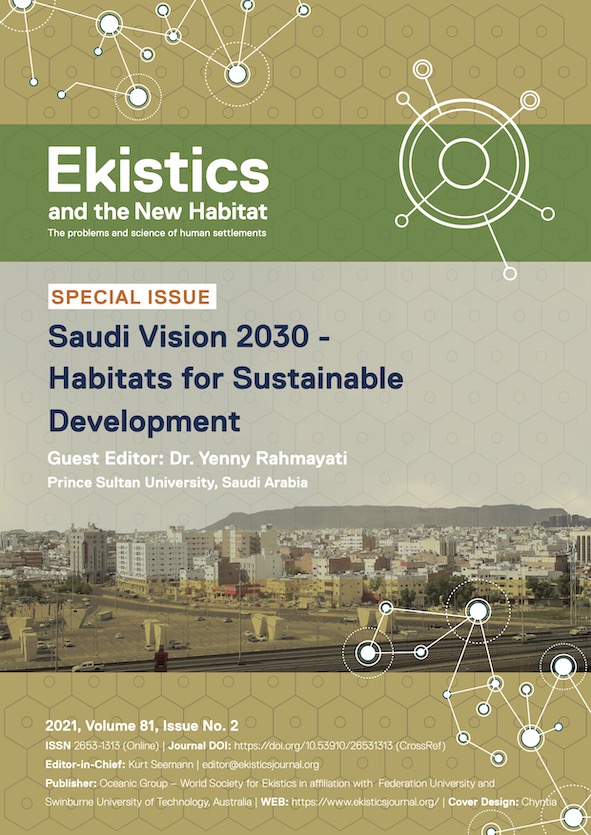Branding Saudi Arabia’s Capital
How Riyadh Uses Urban Place Marketing, Mega-Events, and Urban Destinations as Tools to Brand the City in Line with Vision 2030
DOI:
https://doi.org/10.53910/26531313-E2021812458Keywords:
Urban Planning, Architecture, Branding, Placemaking, RiyadhAbstract
This paper explores the employment of urban and architectural branding strategies within Riyadh's plan to become a globally recognized city. Within this framework, the text examines Saudi Arabia's Vision 2030 and its spatial impact on the city's urban environment. The paper discusses how mega-events and urban mega-destinations function as branding, place marketing, and placemaking tools to showcase this vision and promote a "new" Saudi Arabia image. The paper also examines in how far globally established values of culture, leisure, greening, wellbeing, connectivity, and quality-of-life are leveraged in the branding process of Riyadh's mega-destinations to communicate a positive image to a transnational class of metropolitan business travelers and tourists, and an affluent, cosmopolitan Saudi middle class. Deliberating this market-oriented methodology's various implications, the paper concludes with a call for a more participatory and inclusive approach to Saudi Arabia's urban branding process to enhance long-term credibility and identification. To achieve the outlined objectives of this paper, the author employed a combination of qualitative methods that included on-site field research, literature reviews, and conversational interviews with various stakeholders that include representatives of involved architectural and urban planning offices, members of the academic community, and citizens of various professions and age groups.
Downloads
Published
How to Cite
Issue
Section
Categories
License
Copyright (c) 2022 Ekistics and The New Habitat

This work is licensed under a Creative Commons Attribution-NonCommercial-NoDerivatives 4.0 International License.
Please contact the Editor-in-Chief: editor@ekisticsjournal.org, should you have any questions on copyright for your submission.
This research journal is for Educational and Knowledge development purposes.
All material published on this site complies with our copyright and terms as described by the Attribution-NonCommercial-NoDerivaties 4.0 International (CC BY-NC-ND 4.0)






